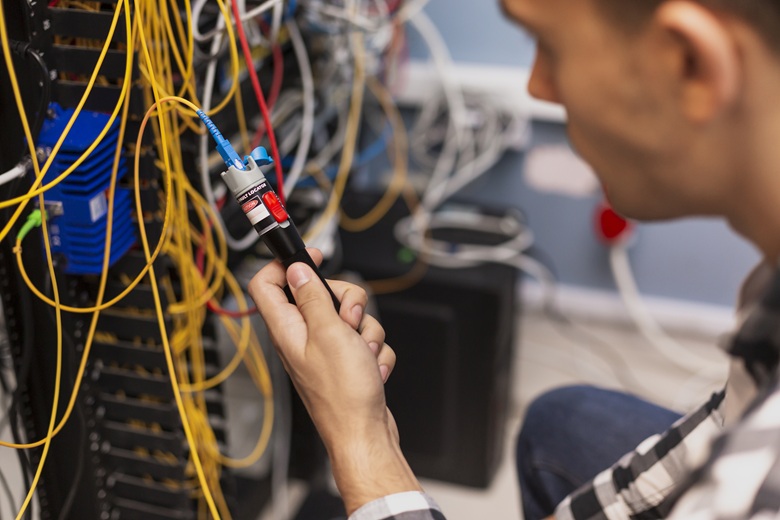By Quintdaily
Copyright quintdaily

Cabling is mostly an afterthought when it comes to the establishing of an office or updating of a network until it malfunctions. The reality is that a lack of proper planning and compromises in cabling not only leads to chaotic work areas; but also the downtime, safety issues as well as high repair bills in the future. The faults range all the way from the lost desktops that have no network connections nearby to the cheap cables that almost no one can responsibly use on anything but a desktop. The good news? The latter have most of them readily evaded by a forethought. These are the largest cabling catastrophes that we witness – and how to avoid them.
1. Planning Absolutely Nothing
You’d hope that this would be a no-brainer, but it’s still the most common catastrophe we see.
Someone fits out a space without thinking where desks will actually go, or how many people might join the team in a year. Next thing, you’ve got someone sitting at a workstation with no network point anywhere near them. Extension leads under carpets, cables run across walkways. seen it all.
It is less expensive to come back and fix it than it would be to get it right the initial time. Even a drawing would be superior. It doesn’t need to be architectural — merely a rough approximation of where the printers, routers, PCs and phones will go. And for the sake of cables’ sanity, figure on having more than you need now.
3. Cutting Corners on Cable
We all try to save a buck — we get that. But using bottom-of-the-line cable is like putting plastic tyres on a car. It will get you there for a while, but eventually it’s going to break.
We’ve had jobs where the cable was supposedly Cat6, but inside it was twisted like string and barely held together. Looked alright at first glance, but as soon as the network started doing real work — phones, video calls, shared drives — it fell apart. Signal loss, packet drops, jitter on VoIP. Absolute chaos.
Use proper brands. Good copper. Shielded if you need to. Not that copper-coated aluminium rubbish you can find on bulk-buy sites. And if unsure? Ask someone who installs it professionally to advise you — not some spotty kid who stumbled upon a deal on the web.
3. Knotted, Unlabeled, and Just a Knot Scotchtape
You’ve probably seen it — server room looks like a bowl of spaghetti. Cables wrapped around each other, zip-tied tight, shoved behind furniture, and not a label in sight.
It’s not just about hygiene (though it does assist). Tangled cables are harder to trace when things go wrong. Too much bend, too much pull, too close to the power — it all adds up. It even obstructs airflow sometimes, especially around switches or routers, which leads to overheating problems.
Use trunking. Mark both ends. Avoid pulling cables taut — leave a little slack. And don’t connect power from mains to data lines unless you like interference spoiling your day. Again, not hard — just pay a bit of attention.
4. No Testing, or Quick Testing
We can’t recall how many times we’ve asked customers, “Did anyone test this when it was installed?” — and they just blink dumbly.
Testing is not installing a laptop and checking whether the internet is functioning. That’s not evidence of anything. You need good tests — signal integrity, continuity, crosstalk, shielding integrity. If loose wires or bad terminations exist, you must correct them prior to the facility going live. It’s a hundred times harder to do it afterward.
Use the proper tester. Document the results. Keep them handy. That way, if ever there is an issue down the line, you’ve got records that it was all right at the time of install — or you know exactly what to fix.
5. Failing to Pay Attention Where the Cable Really Is
You can have perfect cabling and still end up with issues if it is run around the wrong areas.
We’ve discovered cables alongside hot pipes (melted), along exposed roof voids with no roof (mice-chewed), and right next to high-voltage power cables (interference hell). We even pulled one out that had water dripping through the ceiling onto the patch panel.
Shield the cable. Use conduit where you’re going through walls or rough terrain. Make sure it’s heat, damp, or cold-rated if it’s in an extreme situation. And don’t forget building codes — you’ll fail an inspection or void your insurance before you plug in a laptop.
Business IT Cabling is one of those things that nobody thinks about until it breaks. And when it breaks, it’s never at a convenient time.
If you’re fitting out an office or upgrading a network, don’t leave the IT cabling to chance. Don’t wing it with cheap reels and messy installs. Plan it. Test it. Use the right stuff. And label every single lead — your future self will thank you.



